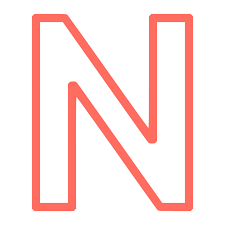What is Nitter?
Nitter is an innovative, free, and open-source front-end for Twitter that focuses on enhancing user privacy and offering a speedier, more efficient way to browse Twitter content.
It stands as a testament to the power of community-driven projects to offer privacy-focused alternatives to mainstream platforms. Designed to strip away unnecessary features and tracking mechanisms, Nitter ensures a lightweight and user-friendly experience.
The Purpose and Advantages of Using Nitter
The core purpose of Nitter is to provide a privacy-centric way of accessing Twitter, making it an essential tool for users concerned with digital privacy and online tracking. This alternative platform is especially valuable for those who want to engage with Twitter content without the associated drawbacks of slow page loads, targeted advertisements, and privacy concerns. By prioritizing user anonymity and data protection, Nitter aligns with the growing demand for more secure and private online experiences.
How Nitter Works
The Technical Backbone
Nitter operates by retrieving Twitter’s publicly available content through backend requests and displaying it on a minimalistic and efficient web interface. This method significantly reduces the load on the user’s device and enhances the browsing experience by omitting heavy JavaScript and tracking scripts employed by the official Twitter site.
Privacy Features
Nitter is built with privacy as its cornerstone. It does not track users, does not serve ads, and does not require JavaScript, making it a beacon for digital privacy advocates. These features ensure a browsing experience that is not only faster but also more secure from a privacy standpoint.
Speed and Efficiency
Thanks to its streamlined approach, Nitter provides a markedly faster browsing experience compared to Twitter’s standard interface. This efficiency makes it particularly appealing for users in regions with limited internet bandwidth or those using older devices.
Privacy Features
One of the main draws of Nitter is its emphasis on privacy. By accessing Twitter content through Nitter, users can browse tweets, profiles, and hashtags without worrying about being tracked by Twitter or third-party advertisers. This enhances user privacy and security, offering peace of mind to those concerned about data collection and surveillance.
Customization and Control
Nitter offers users greater customization and control over their Twitter experience. With Nitter, users can customize the appearance of their feed, filter out unwanted content, and even access Twitter feeds anonymously. This level of control empowers users to tailor their social media experience to their preferences while prioritizing privacy.
Growing Popularity
Despite being a relatively niche platform, Nitter has been gaining popularity among privacy-conscious users. Its simplicity, ad-free interface, and commitment to privacy have attracted individuals seeking alternatives to traditional social media platforms. As awareness of online privacy issues continues to grow, platforms like Nitter may see increased adoption.
Setting Up Nitter
Using Nitter through a Web Browser
Accessing Nitter is straightforward. Users can simply navigate to a Nitter instance through their web browser without the need for an account or personal information, offering a quick and private way to view Twitter content.
Hosting Your Own Nitter Instance
For users seeking the highest level of privacy and control, hosting a personal Nitter instance is a practical choice. This section delves deeper into the technical requirements and provides a detailed guide for setting up a private Nitter server, empowering users to take their privacy into their own hands.
Nitter’s Features and Benefits
Nitter is not just about privacy; it also offers a range of user-centric features such as theme customization, RSS feed integration, and API access for developers. These features ensure that Nitter is not only a privacy tool but also a versatile platform for engaging with Twitter content.
Nitter vs. Twitter
Comparative Analysis
While Nitter and Twitter serve similar purposes, their approach to user privacy and experience diverges significantly. This comparison highlights Nitter’s advantages in privacy, efficiency, and user control, presenting it as a compelling alternative for those disillusioned with Twitter’s privacy practices.
Potential Drawbacks and Limitations of Nitter
Despite its advantages, Nitter has its limitations, including reliance on Twitter’s API, which may restrict access to certain content or features. This section discusses these limitations and offers insights into how they impact the user experience.
User Experiences with Nitter
User feedback on Nitter is overwhelmingly positive, with many praising its privacy features and efficient design. This section shares testimonials from users, shedding light on Nitter’s impact and areas for improvement.
The Future of Nitter
Looking ahead, Nitter is poised for continued growth and development. With a dedicated community and a clear vision, Nitter is set to expand its features and reach, further establishing itself as a key player in the privacy-focused web.

Conclusion
Nitter exemplifies the demand for and possibility of privacy-respecting alternatives in the digital age. Its dedication to user privacy, combined with a robust, efficient platform, makes it a valuable tool for anyone looking to engage with Twitter content securely and privately.
FAQs
Is Nitter legal to use?
Yes, Nitter is legal to use. It accesses Twitter’s public data in a way that respects user privacy and security. However, users should respect copyright laws and Twitter’s terms of service when using Nitter.
Can I access private Twitter accounts through Nitter?
No, Nitter can only access and display content from public Twitter accounts. Private account information remains inaccessible to ensure privacy and security.
How can I contribute to Nitter’s development?
Contributions can be made through code contributions on GitHub, financial donations to support server costs, or by participating in the community to suggest features and improvements.
Are there any mobile apps for Nitter?
Currently, there are no official mobile apps for Nitter. However, Nitter’s mobile-friendly web interface ensures a seamless experience on smartphones and tablets.
How does Nitter handle Twitter’s API limitations?
Nitter works within Twitter’s API limitations by caching content and efficiently managing requests. While this may result in some delays or restrictions in content availability, it ensures that Nitter remains a viable and efficient alternative for accessing Twitter content.

